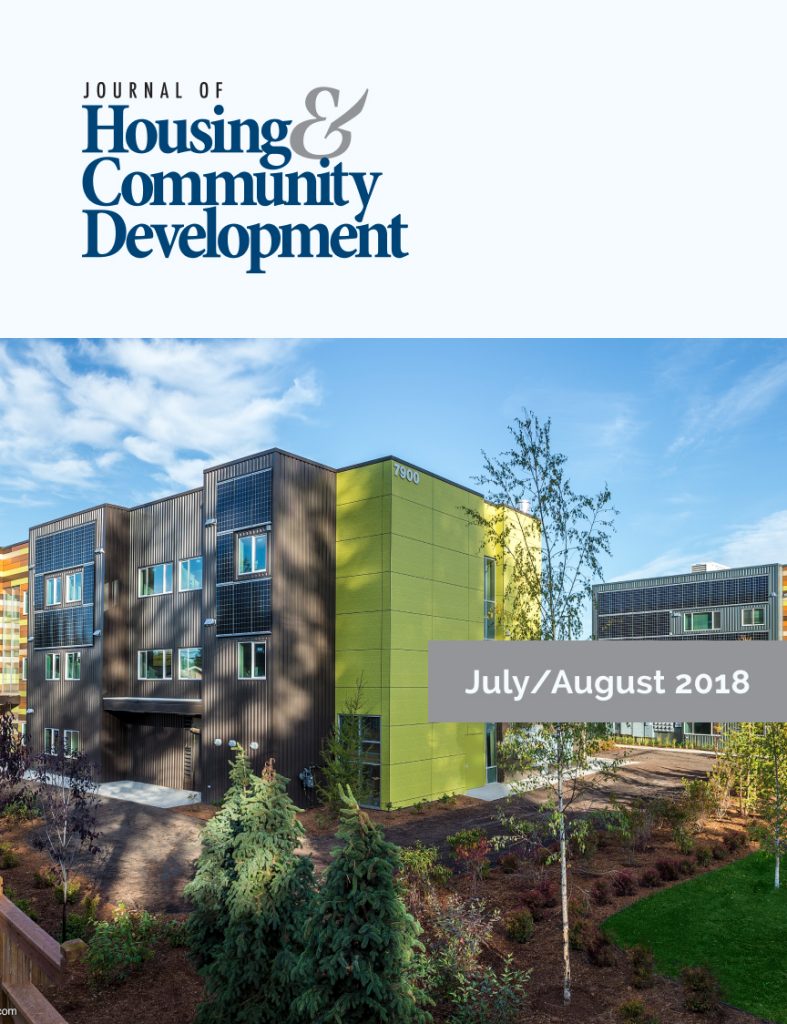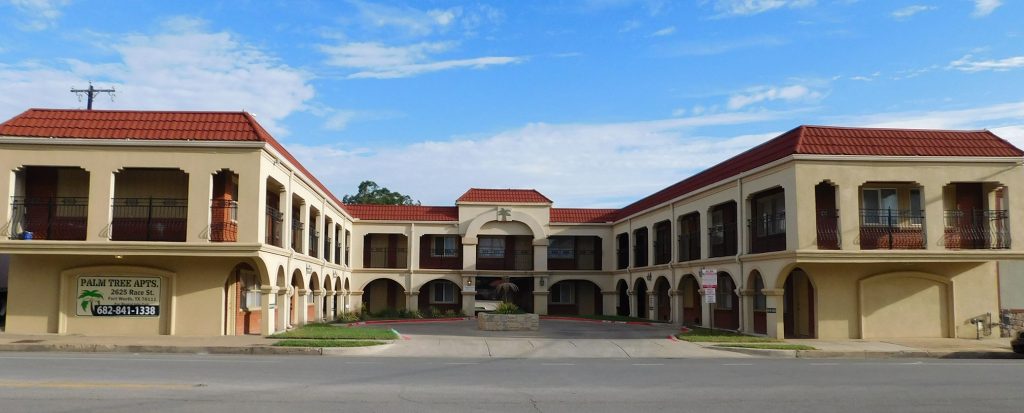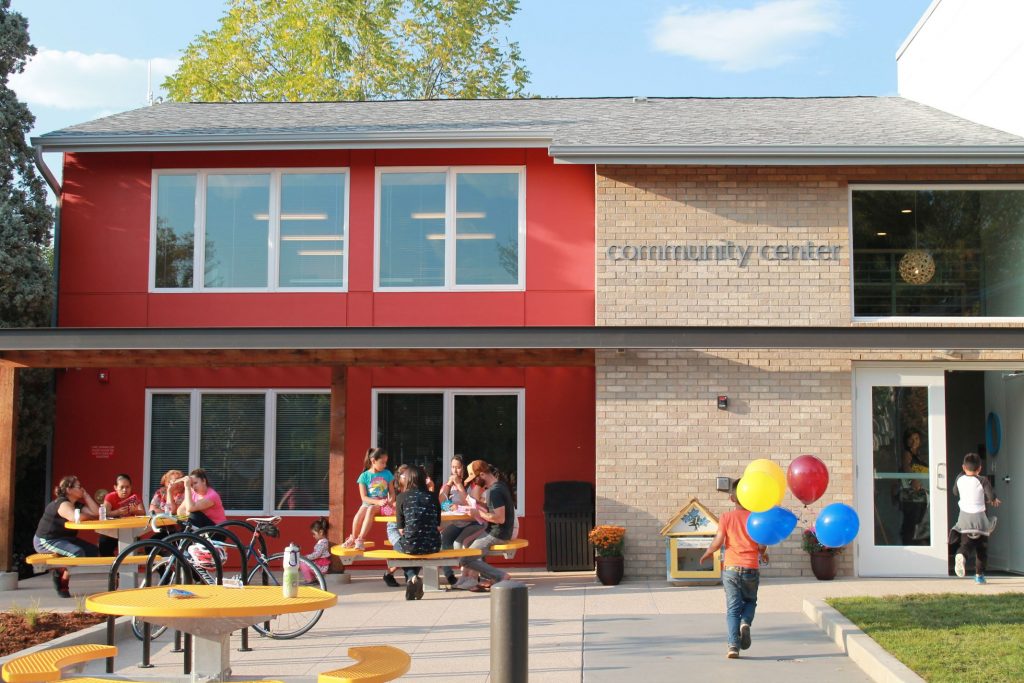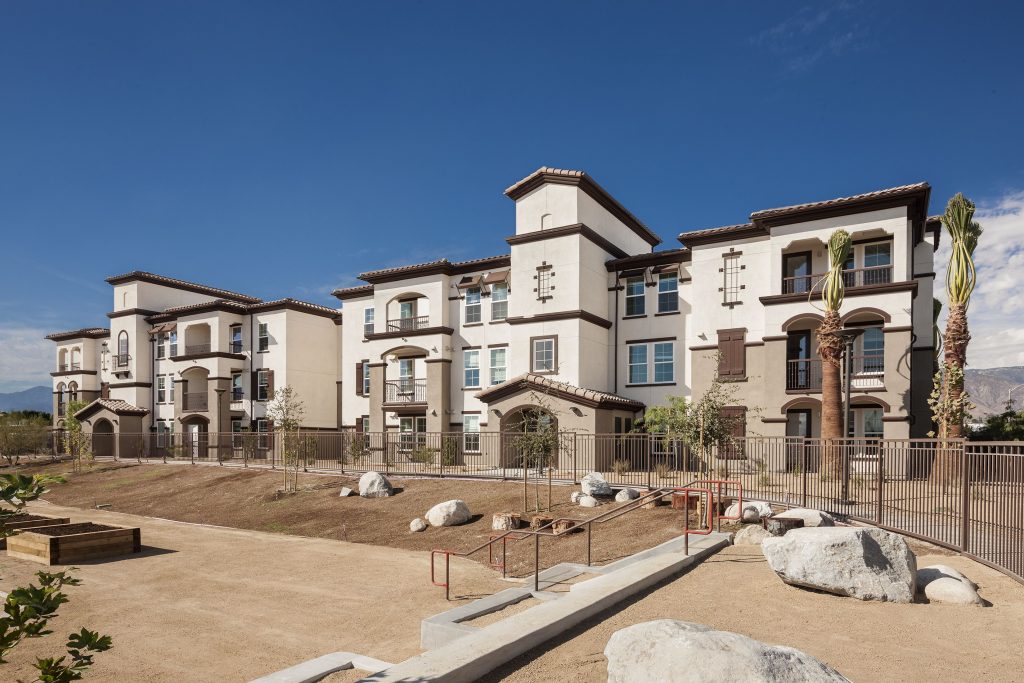Awards of Excellence: Golden Inn and Village
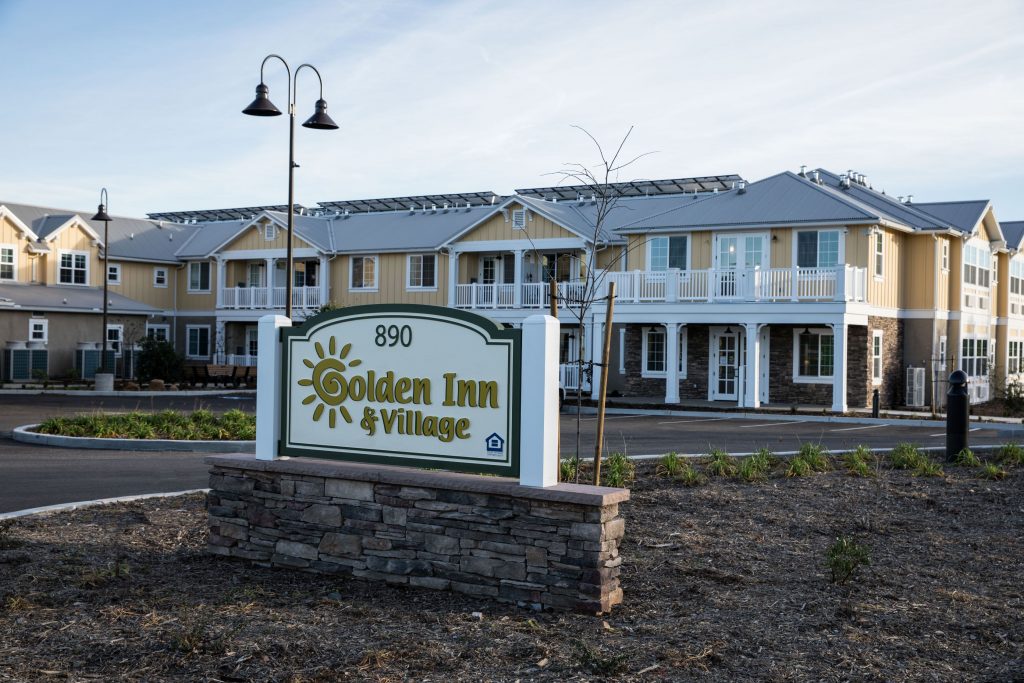
CORRECTION: An earlier version of this article misidentified the Housing Authority of the County of Santa Barbara as the Housing Authority of the City of Santa Barbara. It also provided statistics for the Housing Authority of the City of Santa Barbara instead of for the Housing Authority of the County of Santa Barbara. We apologize for the errors.
The Housing Authority of the County of Santa Barbara wins a 2017 Award of Excellence in Affordable Housing for Golden Inn and Village – Family and Senior, which created multi-generational and senior housing for low-income residents that is environmentally sustainable, impeccably designed, and community-oriented. Nominated from among the NAHRO Award of Merit winners each year, the Awards of Excellence winners are chosen by national juries and honored at the annual National Conference and Exhibition in October. They represent the very best in innovative programs in assisted housing and community development.
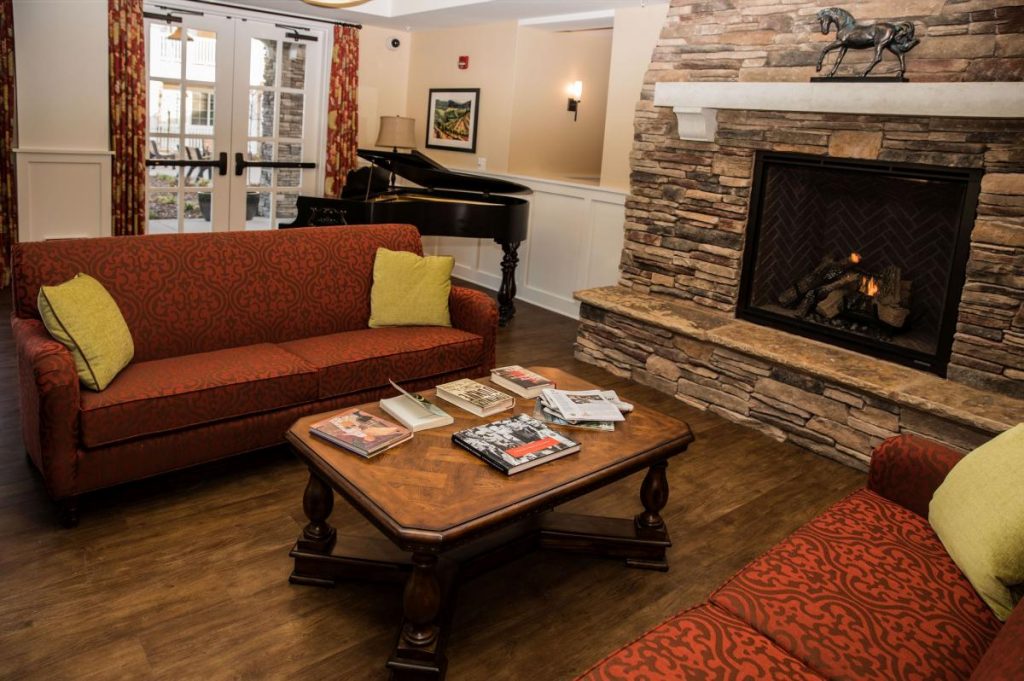
Houses and apartments in Santa Barbara are expensive. Real estate company Zillow estimated that in April 2018 the average home value was more than $1 million dollars.
The Housing Authority of the County of Santa Barbara (HACSB) has been in existence since 1941. HACSB owns and manages more than 1,300 affordable rental housing units and more than 3,800 Section 8 vouchers. Along with partners the Surf Development Company, Rona Barrett Foundation, and MUFG Union Bank, the HACSB embarked on an ambitious affordable housing project: the Golden Inn and Village – Family and Senior. The campus provides a mix of multi-generational housing and senior services to low income families, and includes two buildings along with a significant amount of community space.
“The development has provided a missing part of the community through much needed low-income housing for local residents,” remarked Robert Havlicek, Jr, HACSB Executive Director. This is evidenced by the fact that all of the occupants fall below 61 percent of the area median income (AMI), and 55 percent fall below 51 percent of AMI. To help make the Golden Inn and Village more affordable to residents, rents are subsidized through a tenant-based rental assistance program, and include project-based housing choice vouchers and security deposit assistance.
While the multi-generational housing and senior services are intended for low-income families, the apartments’ stunning views, complimentary activities and services, and sustainable features provide amenities, design and ambiance that “resembles a new 4-star hotel.” Special and luxurious touches provide an added benefit to residents, including scenic grounds that host vineyards as a backdrop, walking trails lined with drought resistive landscape and historic oak trees, and a central courtyard with ample seating that encourages socializing among residents and guests.
Through its design, the project sought to create an eye-catching western gateway into the Santa Ynez township, preserve on-site oak trees and views of the mountain, and accommodate surface drainage from local highways and development. The buildings were designed with a rustic quality to blend into the Santa Ynez Valley community. To create that specific aesthetic with sustainable features in sixteen months was an ambitious goal – but one that the HACSB was determined to meet. The expedited proposed development timeframe provided challenges that could have – but did not – derail the project.
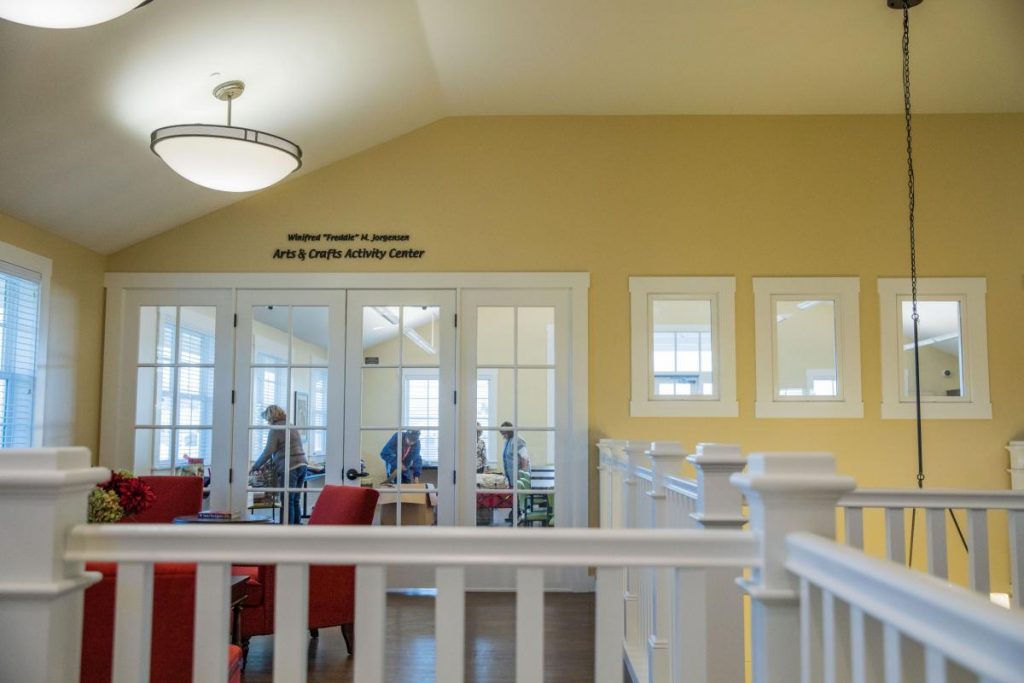
One of the first challenges was the very real concern that, because of California’s drought, the HACSB would not get issued a permit to start new water service for the campus. A letter from the Santa Ynez River Water Conservation District General Manager said as much, and that the project would not be issued a “Can and Will Serve” letter, which provides the necessary approvals. While the Santa Barbara Director of Housing Development was able to convince the Water Conservation’s District General Manager that affordable housing was a public benefit, a special “Water Board” meeting needed to be convened to receive final approvals. After much debate about the drought’s impact on the community compared to the need for affordable senior housing, the “Water Board” voted four-to-one to allow for a “Can and Will Serve” letter, which would allow The Golden Inn and Village to begin new water services. The timing was impeccable, as the project would have lost a 9 percent low income housing tax credit award within days. Another issue that arose was sub-standard electrical work which required a second electrical contractor and a third party electrical engineer to fix.
Breaking ground in April 2015 and earning its certificate of occupancy in October 2016, the 60 unit apartment mix includes 20 studio units and 40 one-bedroom units, and the 28 unit mix included eight one-bedroom apartments, ten two-bedroom apartments, and ten three-bedroom apartments. Common areas, which make up more than 20 percent of the space, offer amenities that include a beauty parlor, computer room, exercise room, library, card room, commercial kitchen, medical and dental services, TV/movie parlor, and additional rooms that can be used for clubs and organizations. Modern conveniences include a keyless card entry system in the senior development.
The campus was built with sustainability and longevity in mind, and in accordance with GreenPoint Rated Multifamily Guidelines, an independent green home certification program in California. The early design stage included a “value engineering” process which involved key considerations such as the use of environmentally-friendly materials, reduction of energy usage, and management of rainwater. Life-cycle costing also was an important part of the planning process, with ease of management and long term-maintenance impacting decisions on which materials to use. For example, the flooring in 90 percent of the senior living building was designed for longer use, without replacement.
Among the sustainable products and materials found in The Golden Inn and Village campus are vinyl, which is used in the deck, patio railing, roofing, plumbing, flooring and windows, and fiberglass, which is used in door coverings and counter tops, among others. Energy-saving features include photovoltaic solar systems that reduce energy use and high efficiency HVAC units that reduce power use. Because a majority of the HVAC units are “over and above the building code requirements,” the campus received energy rebates from the gas company. Adding to the building’s conservation is the state-of-the-art lighting system, which is expected to perform 36% better than California’s lighting power density requirements.
Water conservation was also implemented throughout the campus’ development with features that include smart irrigation design, drought resistive plants, and water-restrictive fixtures in the buildings. Rain water is absorbed back into the property’s soils with a dry creek and five water retention basins that help replenish the aquafers below the development by capturing rain water. Further, energy efficient tanks and water heaters that exceed building code’s energy requirements were installed.
Reducing pollution from cars and adding to the campus’ benefits is the ability for residents to walk to a nearby grocery store, YMCA, and schools. A bus stop just outside of the facility provides additional access to conveniences, including medical facilities, banks, and restaurants.
The multi-family and senior developments cost about $33 million. Funding sources included included nine percent LIHTCs, solar credits, a seller carryback note, a deferred developer fee, and loans. The senior development cost about $361,702 per unit and the multi-family facility cost about $439,299 per unit.
The ongoing success of the Golden Inn and Village is helped by established partnerships. The development has been embraced by the community and is thriving with support of both services and salaries. Operating costs, the on-site activities director’s salary, as well as activities and services are paid for with donations from The Rona Barrett Foundation’s fundraising and volunteer efforts. HACSB provides additional staffing for property management and maintenance.
More Articles in this Issue
- HD SUPPLY
Time Is Money: Successful Turns and PI Project Solutions
Many studies have shown that for every move-out, there needs to be a move-in as… Making an IMPACT on Capitol Hill
The NAHRO Washington Conference, Innovate 2018: IMPACT, began at 2:00 p.m. on Sunday, April 22,…Awards of Excellence: The Palm Tree Apartments
Fort Worth Housing Solutions wins a 2017 Award of Excellence in Program Innovation for developing…Awards of Excellence: Project Renovate
The Boulder Housing Partners wins a 2017 Award of Excellence in Affordable Housing for Project Renovate, which…Awards of Excellence: Valencia Vista
The Housing Authority of the County of San Bernardino and the National Community Renaissance win a…Commissioners Corner: Goals
I bring you greetings on behalf of the NAHRO Commissioner’s Committee, where I serve as…
